LES PLUS BEAUX VILLAGES DE FRANCE
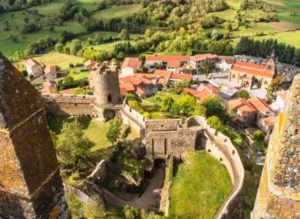
In September 2021 two more villages achieved the highly prized acceptance into the association of Les Plus Beaux Villages de France, namely Polignac in the Haute-Loire, and Le Malzieu-Ville in the Lozere. It’s certainly no secret that France abounds with picture-perfect destinations. If you’ve ever spent time exploring rural France, you probably thought that surely you must have discovered the most beautiful villages in the country—and we all have our favourites. There are villages that exude a deep sense of timeless, ancient France, where rural life exists, unhurried by modern pressures and the intrusiveness of excessive technology.
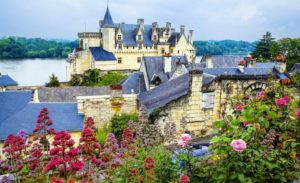
From Alsace to Provence, from Brittany to the Dordogne, and from the Loire to Languedoc, there are villages perched precariously on hillsides, beside the sea or tranquil rivers, with perhaps an ancient church or château at their heart, but above all, a deep, tangible pride in the past and traditions they have inherited. In 1982 L’ Association des Plus Beaux Villages de France was created to help maintain the rich cultural heritage that defines a village, and to secure their long term social and economic viability by promoting their tourism potential as a collection of beautiful and well managed attractions.
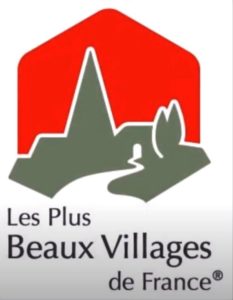
Les Plus Beaux Villages de France (The Most Beautiful Villages of France) is an independent organisation whose members have been selected as the very best of French villages. These are multifaceted destinations whose built heritage is only one feature of their treasures. Each village must meet strict membership criteria, such as size, conservation of heritage values, presentation, arts and crafts, and have well managed visitor facilities. These standards are closely monitored to ensure that each individual village maintains them.
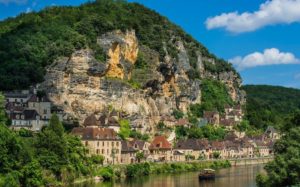
When planning a visit to rural France, check out the list to see what’s in the region where you will be travelling, and chances are, that any of these jewels of French heritage you add to your itinerary will turn out to be a highlight of your trip. Over the years, we’ve planned several well focussed regional trips specifically to visit anything up to 20 villages over a number of days. As a bonus, a number of the villages are inscribed as UNESCO World Heritage Sites.
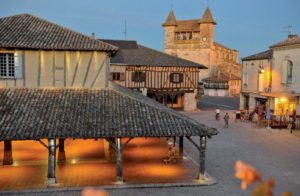
There are said to be around 32,000 villages in France, and currently those that have met the stringent criteria be included on the Plus Beaux Villages list number only around 164, spread across 14 regions and 70 departements. This number changes from time to time, as some villages may be granted membership, while others may have had their membership suspended, or even withdrawn, if they have failed to keep up the standards of the association. We’ve experienced this a couple of times, when we’ve noticed that a village has been dropped off the membership list since the last time we’d consulted it.
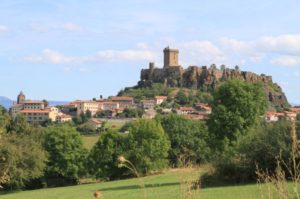
A few kms north of Puy-en-Velay, perched on a volcanic platform, the powerful fortress of Polignac is one of the most astonishing and visually arresting heritage sites in the Auvergne. The village at the foot of the fortress is now looking forward to being able to welcome visitors who otherwise probably wouldn’t have known about it. Polignac was rewarded with membership of the association in acknowledgement of the outstanding efforts of the local community in restoring its built heritage. This is especially gratifying to the village, particularly since its first application to join the association back in 2010 was rejected. Since then, with the expert help available through the association, the village was able to undertake the complex restoration project that has now brought success. Ongoing maintenance costs related to their village’s historic buildings are expected to be largely funded through the expected increase in tourism revenue.
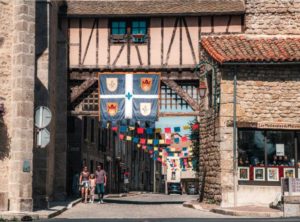
The other village that received membership approval is the fortified village of Le Malzieu-Ville, in the Margeride region of Lozere (Languedoc-Roussillon region) in southern France. Dating back to the 13th century, it has retained its authentic character as a stronghold with ramparts, towers, fortified gates, a clock tower and ancient houses.
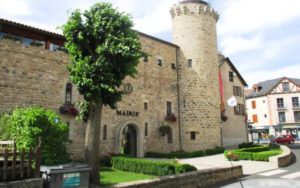
The story of its listing is the same as that of Polignac, in that its first application for membership back in 1993 was rejected for very similar reasons. Again, the high standard of restoration and upgrading of its presentation that took place in the following years has been acknowledged by acceptance into the association.
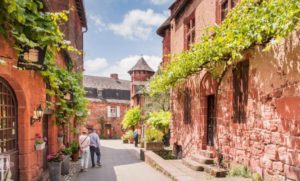
The whole concept of the Plus Beaux Villages de France was started back in 1982 by Charles Ceyrac, the Mayor of Collonges-la-Rouge in the Correze department of the Limousin region. He had the idea of uniting some of France’s exceptional villages chiefly in order to protect their heritage, but also to help find a solution to rural depopulation. Within a year, he had 66 like-minded mayors on board, and the association of Les Plus Beaux Villages de France was born.
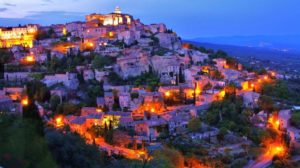
Maurice Chabert, Mayor of Gordes in Vaucluse says that “our well-reasoned and passionate ambition is to reconcile villages with the future and to restore life around the fountain or in the square shaded by 100-year-old lime and plane trees”. It’s clear that the future is as important as the past when it comes to showcasing France’s outstanding rural destinations.
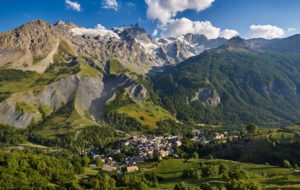
The sheer spread of these villages across the entire country means that no matter where you’re headed, the chances are you’ll never be too far from one of the region’s best attractions. For us, it’s sometimes happened that we’ve come across one of the brightly coloured logos of the association quite by chance as we’ve been about to enter a small village. Part of the fun of planning a trip is researching our intended destinations, but perhaps the village is a new member, yet to appear on the official list, or we simply missed it—such unexpected delights are just one of the joys of travelling!
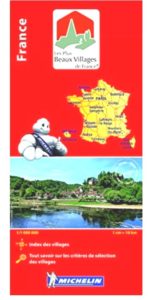
We would also strongly urge you to purchase the red Michelin road map specifically for the Plus Beaux Villages de France to help you plan your trip. The very nature of these little villages makes a Sat/Nav totally inadequate for this purpose, although very useful once you’re on the road and basically know where you’re headed.
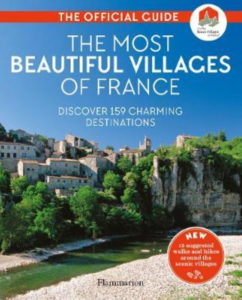
We also highly recommend the book, now available in English, ‘The Most Beautiful Villages of France’, published by Flammarion. It contains directions, maps, architectural highlights, events and activities, gastronomic and artisan specialities, perhaps local accommodation and of course prime dining recommendations for each village. It’s a high quality publication, and a delight to pore over and inspire your best travel instincts! However, although the book is regularly updated, the website itself should also be consulted before finalising your itinerary, just in case there has been any new additions (or deletions) since the book was last published.
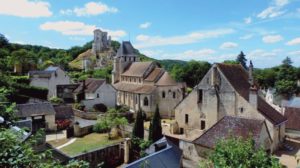
Membership of the association is highly sought after, and a “Quality Commission” carefully assesses each application. The association says that barely one in five applications is successful. The criteria requires that the population must be less than 2,000 inhabitants; the village must have at least two sites that are classified as national heritage items (monuments historiques), local support in the form of a vote by the local council, and lastly, a meticulous on-site evaluation.
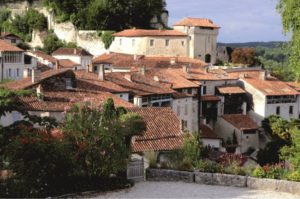
Each village pays an annual fee to the association, and the mayor must sign the association’s Quality Charter. If a village fails to maintain the requirements of the Charter it may be excluded, while another, whose standards are judged to be slipping, will have their classification accompanied by “reservations”, or observations, on the necessary steps that they need to take to regain full listing status.
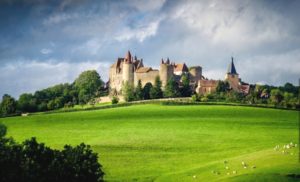
The association offers a framework for development and professional collective tourism promotion to member villages. Attaining the status as one of the most beautiful villages in France provides a lot of prestige and popularity to locations that might not usually be on tourists’ itineraries. Figures show that membership can bring a rise of between 10% – 50% in visitor numbers, which needless to say, would bring a considerable boost to the local economy. As well, there is a real sense of community and togetherness amongst member villages, and are known to be supportive of each other, despite their cultural and geographical differences.
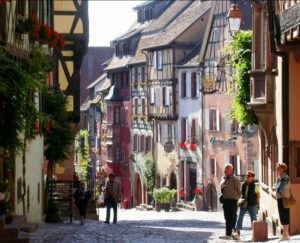
Right from the outset, the association was keen not to simply create either soulless “museum villages” or “Disneyland-style” theme parks. Rather, the focus has always been on authenticity, and highlighting the specific attributes of each village. The association affirms that they are “guardians of the past but resolutely turned towards the future.” As well as support to the locals, the association also assists artisan craftspeople and those with heritage restoration expertise who are looking for a place to create and perhaps also to teach their skills and pass on their know-how, to relocate to one of the member villages. Often, workspaces such as redundant industrial sites, or abandoned properties have been provided to such potentially valuable residents.

As a flow-on from this scheme, the association has created lists of themes, based around the heritage and history, the culture of a region and the artisan skills of the inhabitants of each village. These themes include architecture, religious heritage, châteaux and fortifications, sport and wellness (e.g. spas), art and artisan crafts, gardens, nature, and of course, wine and gastronomy.
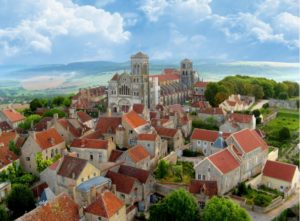
Other essential visitor facilities include restaurants and cafes serving local produce, local tour guides, and where possible, extend a welcome to the visually handicapped with sensory visitor circuits, information booklets in large print or braille, as well as audio guides. There must also be provision for carparking that does not visually intrude on the village, and public toilets that are always kept clean and tidy.
Another key factor in the association’s forward thinking is the availability of accommodation, in or near each member village. Many villages now offer local accommodation, ranging from picturesque village hotels, Chambres d’Hotes (B&Bs), gites (vacation cottages), and campsites.
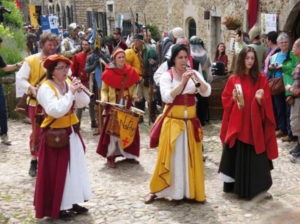
A number of villages also hold annual events, such as medieval fairs, music festivals and art shows, so its worth checking out the websites for each village you’re interested in to plan your dates to catch something special. We’ve sometimes encountered a local event quite by chance, such as a medieval fair with say, jousting tournaments complete with knights in armour, or a wine harvest festival, which just reinforces the wisdom in checking the “what’s on” before heading off.
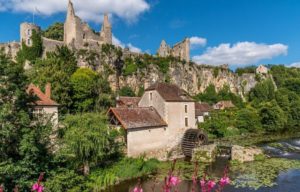
There are member villages scattered across the country, but some regions are particularly blessed with them, such as the Dordogne departement of Nouvelle-Aquitaine and the Vaucluse departement of Provence, which has the most. It’s therefore easy to plan a very rewarding itinerary that takes in quite a number quite without having to travel vast distances.
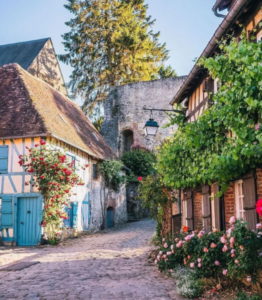
There are a couple of member villages relatively close to Paris. To the north is the little village of Gerberoy, in the west of the departement of Oise, in the Picardy region. By car from Paris, it’s only about 1 1/4hrs, and less than an hour east of Rouen. Gerberoy is known as the “village of a thousand rose bushes”. Climbing roses, hydrangeas, wisteria, daisies, clematis, and many other plants abound, along with picturesque, cobbled lanes, colourful 17th and 18th century houses, ramparts and a Charlemagne Tower, not to mention a mini-vineyard, all adding up to its undeniable rural charm.
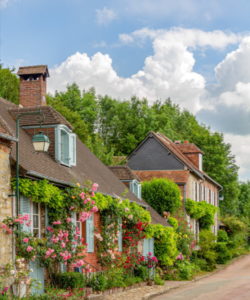
The Impressionist painter, Henri de Sidaner, a friend of Claude Monet, moved to the village in 1901 and created an Italianate terraced garden covering 4,000m² and filled it with roses, and added a pergola, balustrades and statuary. He also encouraged the residents to plant flowers in front of their homes. In the third weekend of June each year the village hosts the Rose Festival, an unmissable event with a delightfully festive atmosphere.
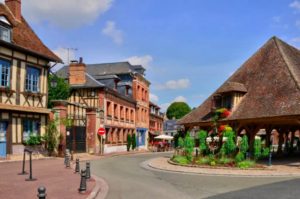
The village of Lyons-la-Forêt is the departement of Eure, in Haute Normandie, about 35kms east of Rouen, and about 100kms from Paris, or about 1 1/2hrs driving distance. Located in the heart of the Forest of Lyons, one of the most beautiful beech forests in Europe, Lyons-la-Forêt combines nature and history, since it was the former place of residence of the Dukes of Normandy, together with harmonious Norman architecture of half-timbered, pink brick houses. The village was built on the feudal mound of a 12th century château, and nowadays delightful café terraces, tea rooms, restaurants and antiques shops are grouped around the village centre where a small local market takes place 3 times a week in the beautiful 18th century timber-framed covered market.
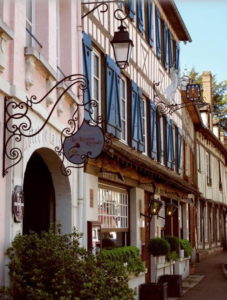
The composer Maurice Ravel, lived in the village for some years, and wrote some of his best-loved pieces such as ‘Le Tombeau de Couperin’, while in residence. Cinema directors Jean Renoir and Claude Chabrol also used the village as film locations. There’s also a good choice of accommodation for such a small place, with a number of B&Bs, and 3 hotels, one of which, La Licorne, has a 1 star Michelin restaurant, making the village a great stop-off for a night.
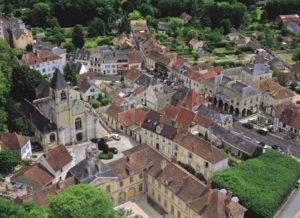
Located on a bend in the Seine, just a few kms from Giverny and its famous gardens, on the border of the Ile de France and Normandy, lies La Roche-Guyon located in the Vexin regional nature park. Formed from troglodyte dwellings at the beginning of the 4th century, it is also identified by its medieval fortress, built on the “Roche de Gui”, named after its 12th century owners. The remains of the first fortress stand on the hill up behind the village. There are three parts to explore: the village itself, the remains of the château/fortress and the medieval donjon (keep), which is connected by a tunnel carved through the rock to the main château below the cliff.
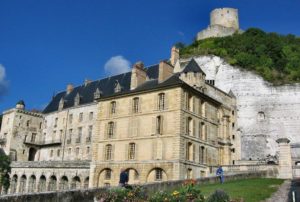
The later, and much grander, 14th century château that stands at the bottom of the hill has been built right up against the cliff face. After D-Day, German Field Marshal Erwin Rommel defended Normandy against the Allies from a bunker located here, and the château itself served as Rommel’s headquarters. The attractive village is centred around the 15th century Church of Saint-Samson. After enjoying a stroll around the village, you can amble along the pleasant river front or take a boat upstream—a relaxing way to while away the afternoon, perhaps after a lunch in one of the village cafes, or take the steeper paths that run to the hills above the village to enjoy the panoramic views over the countryside.
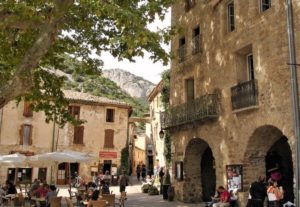
The association of Les Plus Beaux Villages de France offers a treasure trove of beautiful villages noted for the richness of their heritage waiting to be discovered. Some are now very famous, while others are just as lovely, but relatively unknown, and I’ll look at some more of them in future posts.
Let me know if you’ve visited any, and have a favourite you’d like to suggest to other travellers, or if there’s a region with some of the villages you’d like to know more about. As we’ve visited more than 100 of these villages, it’s always a pleasure to share such beautiful destinations among friends!
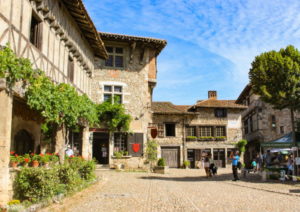


I can hardly wait to go next year !
Hello Lois,
You’re so right! It has been so long since we’ve been able to make travel plans, I can’t wait to pack my travel wardrobe and head off. All this time, some armchair travel was as close as we could get. There are so many wonderful destinations to explore as well as revisit some much-loved places, such as the Dordogne. We’ve been there at various times of the year and there’s always something of interest no matter when you go. I’m sure I can now sniff freedom in the air! Where are you hoping to go first? Lovely to hear from you,
Best regards, Cheryl
Wonderful post as usual, thank you for your work.
We went to the village of Beuvron en Auge in Normandy and thought it had won a prize for the most beautiful village in France but it was probably just on the list. Is it still? It was very quaint.
I love the tremendous amount of detail you give, thanks again.
Hi Diane,
I’m so thrilled that you enjoy the blogs–and thank you also for your warm words of praise! Yes, you’ll be delighted to know that Beuvron- en-Auge has retained its membership of the Plus Beaux Villages de France organisation. We thought it was certainly one of the cutest villages in Normandy that we came across (although we’ve not tracked them all down–yet!). I mentioned it in my story about Historic Normandy a few weeks ago: https://parisplusplus.com/beyond-paris/historic-normandy-from-the-bayeux-tapestry-chateaux-medieval-towns-a-rich-cuisine Scroll about half-way down the post and you’ll see a photo of the ancient market place. That whole area of France is definitely on our “must re-visit” list (especially during the Cider Festival)! Great to hear from you. Best regards, Cheryl